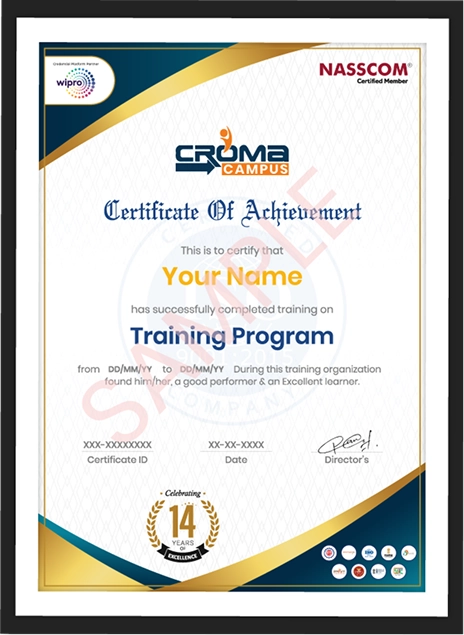Course Design By
Nasscom & Wipro
The objective of the Data Scientist Course in Delhi is to deliver detailed training that covers all the concepts from basic to the advanced level.
You will learn how to manage different types of data in your organization either it is structured or unstructured so that you could manage complex business requirements that will help you in making a sound decision later.
As the best Data Science Institute in Delhi, we are strongly committed to delivering all essential data science skills right from the beginning to algorithms, data analytics tools, learn complex data models, and also learn to drive meaningful insights from the collected data.
You will get hands-on expertise in using various computer science techniques, perform data visualizations, data analytics, learn R, python programming, and many other useful concepts.
You will gain advanced data science skills too that include AI, Machine Learning, Deep Learning, Big Data Hadoop, Tableau, etc.
This best Data Science Training institute in Delhi will help you to earn all technical skills, analytical skills, and soft skills that will make you confident enough to manage all types of business requirements.
The average salary of a Data science expert is $139K as per Indeed.
The average salary of a Data science expert is $113K as per Glassdoor.
The average salary of a Data science expert is $100K as per PayScale.
#1 Skill in the IT industry with an average salary of $106K per year.
190K jobs are predicted by the next year.
The Data Science industry is expected to touch $16 Billion by 2025
Thousands of students have already taken the Data Science Course and placed with Top MNC
Almost every IT industry is looking for skilled Data Science professionals.
You have to design patterns and algorithms using R and python programming languages to access and process data from various sources.
You should have a sound idea of statistical and mathematical concepts to convert the collected data into meaningful information.
You should be sure of various data science techniques like data cleansing, data filtration, data analysis, data congestion, data mapping, and more.
You must have hands-on expertise in using various data science tools like Hive, Hadoop, MapReduce, etc.
You should able to work on complex data models and advanced data science concepts like machine learning, AI, deep learning, and more.
Make yourself an established leader to implement various data analytics skills.
we train you to get hired.

By registering here, I agree to Croma Campus Terms & Conditions and Privacy Policy
+ More Lessons
Course Design By

Nasscom & Wipro
Course Offered By

Croma Campus

Stories
success
inspiration


career upgrad


career upgrad


career upgrad


career upgrad
12-Jul-2025*
07-Jul-2025*
09-Jul-2025*
12-Jul-2025*
07-Jul-2025*
09-Jul-2025*

You will get certificate after
completion of program

You will get certificate after
completion of program

You will get certificate after
completion of program
in Collaboration with






Empowering Learning Through Real Experiences and Innovation

we train you to get hired.

Phone (For Voice Call):
+91-971 152 6942WhatsApp (For Call & Chat):
+91-971 152 6942Get a peek through the entire curriculum designed that ensures Placement Guidance
Course Design By


Course Offered By

Ready to streamline Your Process? Submit Your batch request today!
Croma Campus is an excellent institute to learn Data Scientist Training in Delhi. We provide a comprehensive Data Science Course in Delhi that covers all the important aspects of the subject. Our course syllabus is designed to give students a thorough understanding of the subject and help them become proficient in the field.
The well-equipped laboratories and the actual project would substantially help the Data Scientist Course in Delhi. You'll receive more real-world experience as a consequence, and you'll be better equipped to find a great job.
Croma Campus provides Data Science Course in Delhi with Certification for you, to join in so that you may gain complete skills. The institute's high-quality training will provide you with a diverse set of skills and knowledge.
The duration of a Data Science course in Delhi varies, typically ranging from 3 to 9 months, depending on the program and intensity.
To enroll in the Croma Campus Data Science Training Institute in Delhi, go to helpdesk@cromacampus.com. You may reach us by WhatsApp (+91-9818014543) or phone (+91-9711526942).
Croma Campus is the best institute to learn Data Science in Delhi with Placement.
Croma Campus is the Best Data Science Institute in Delhi with Placement focused training.

FOR QUERIES, FEEDBACK OR ASSISTANCE
Best of support with us
For Voice Call
+91-971 152 6942For Whatsapp Call & Chat
+91-9711526942